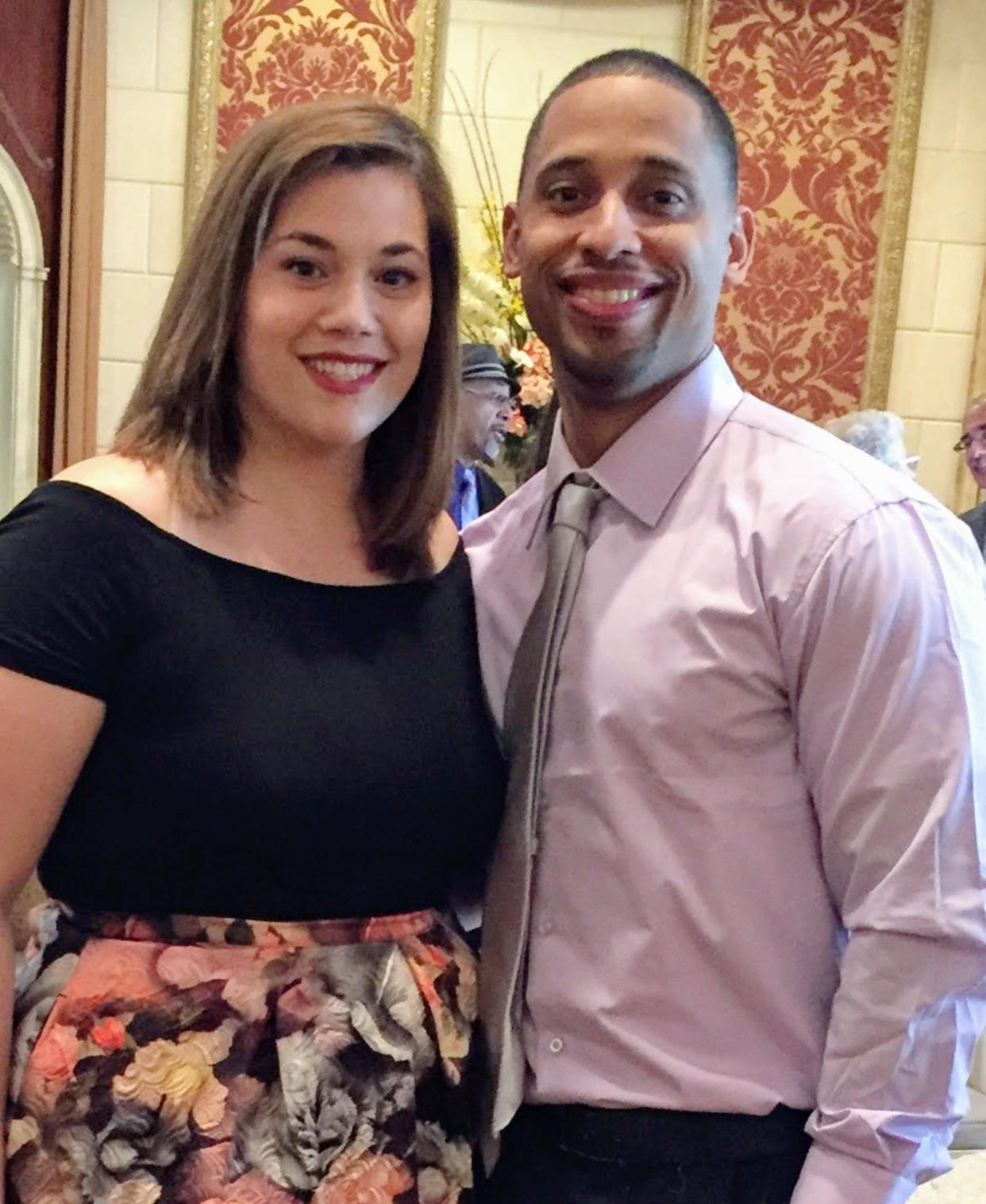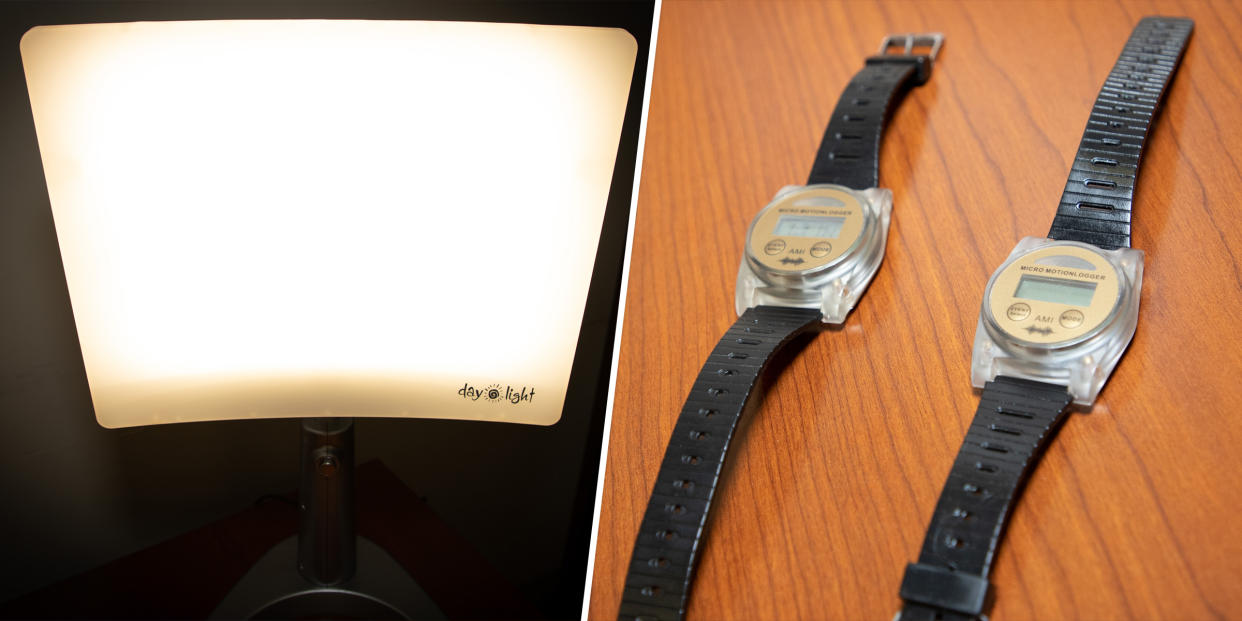How light box therapy helped one woman cope with perinatal depression
As a doula, Cloe Alvardo knew that perinatal and postpartum mood disorders are very common. Still, she felt shocked when she started experiencing ‘very vivid nightmares’ that caused her to stay awake much of the night only two months into her third pregnancy. Instead of feeling excited to be pregnant, anxiety and worry consumed her thoughts. Snagging only a few hours a sleep a day and grappling with tough emotions soon meant Alvardo struggled to do even small tasks.
“It progressively got worse and worse where I wasn’t leaving my bed. I wasn’t going out. I was having anxiety attacks in the supermarket. I wasn’t brushing my teeth. I wasn’t showering. I wasn’t taking care of basic human needs,” Alvardo, 32, of Brooklyn, NY, told TODAY. “That’s when I reached out to my provider.”
The depression and anxiety screening tests she took indicated her mental health was poor and she was later diagnosed with perinatal post-traumatic stress disorder. She met with a psychiatrist at the Zucker Hillside Hospital Perinatal Psychiatry Center at Northwell Health who connected her with a research study examining treatments for sleep, including using light box therapy, that might help her. She signed up for it — even though she was dubious at first.

“I definitely thought it was strange to be given a sleep schedule and then having to stare at a box that is essentially like sunlight blaring in your face every morning. It seemed not to be something I particularly wanted to do or would enjoy doing,” she explained. “It didn’t seem like it was relevant to what was going on with me, but anything that they offered I just did because I knew I needed help.”
Perinatal mood and anxiety disorders and sleep
About one and eight people who give birth experience perinatal or postpartum depression according to the Centers for Disease Control and Prevention.
Dr. Kristina Deligiannidis, associate professor at the Feinstein Institutes for Medical Research, wondered how sleep and perinatal mood disorders were related and if there was a way to improve sleep that could reduce perinatal or postpartum mood disorder symptoms.
“What previous studies have demonstrated is that in many women who develop antenatal depression, so depression around the third trimester, their sleep cycles were significantly disrupted,’” the principal investigator of the light therapy clinical trial told TODAY. “When researchers looked at their sleep cycles, they found that they were delayed, meaning the women were going to bed much later.”
What’s more, they struggled to fall asleep and stay asleep and woke randomly throughout the night and then couldn’t fall back asleep. Previous research also indicated that it wasn’t just the discomfort of being pregnant that caused the sleep disturbances.
“They’re feeling exhausted and there was a significant subset of women with depression and pregnancy,” Deligiannidis said. “Our group decided to focus on the sleep issue as poorly addressed during pregnancy and driving depression for a good percentage of women that develop in pregnancy.”
The multi-site study randomizes participants who are about 24 weeks pregnant to be in one of three groups. One group receives traditional perinatal depression treatment, which includes talk therapy and medication. The second group uses “personalized integrated chronotherapy,” which uses bright light from a light box in the morning and a prescribed sleep schedule along with traditional treatments, such as medications and therapy. The third group receives only light box therapy and sleep schedule. Each person’s time using the light box and sleep schedule is created to meet their needs. Researchers suspected that with better sleep, parents might experience fewer symptoms associated with perinatal mood disorders.
“It’s a study that uses multiple interventions to reset the body’s sleep-wake cycle,” Deligiannidis said. “Again the focus is actually to reprogram the sleep clock in the brain to not only improve sleep but through the improvement of sleep, reduce depression.”

People receiving the light box therapy wear a device called an actigraphy that “measures their light exposure 24 hours a day.” So when they wake at night to rush to the bathroom or scroll on their phone because they can’t snooze, the actigraphy detects that. It also tracks what time they go to sleep and when they wake. With that data in mind, researchers prescribe a sleep and light box therapy plan.
“That includes when we want them to fall asleep so when we want them to get ready to go to bed and fall asleep, when to wake up … and then using the light in the morning,” Deligiannidis said. “Every woman’s prescription is ‘unique.’”
While many psychiatric medications that treat mood disorders are safe during pregnancy, some sleep medications aren't approved for pregnant people, Deligiannidis said. People also appreciate being offered non-pharmaceutical, interventions during pregnancy as many are worried about their health and their baby’s well-being. The researchers hope that when pregnant people get better sleep, the symptoms of their mood disorder are lessened and they are even better able to tackle a newborn postpartum.
“What this is really focused to do is get the sleep rhythm back on track in pregnancy so that after when they deliver they’re in a much better place and a stronger place — a resilient place — to handle the sleep disturbances that are going to be caused by this little one waking up,” Deligiannidis said. “We continue working with them with the bright light and the sleep regimen.”
It might also positively impact their babies.
“We’re trying to see if not only we are helping mom sleep better but are we in fact maybe helping the baby’s sleep cycle, too,” Deligiannidis said.
The study is still ongoing and recruiting patients.
Feeling better and welcoming a baby
When Alvardo started the light box therapy and sleep schedule she was in a “very rough space.” But she soon noticed a difference.
“What it helped me to do was get into a normal sleeping schedule and get up and start my day. It gave me a sense of purpose,” she said. ”When I was able to get into it and sleep, I was able to then work on my mental health and my perinatal mood disorder to make my situation better and start functionally normally.”

In addition to the sleep schedule and the light box therapy, Alvardo took medication to treat the symptoms of her PTSD. Then a few weeks after starting the study, she joined talk and group therapy.
“I was able to work on the therapy and really work on myself and what was the root of the PTSD and what was really triggering me,” she said.
Being pregnant in the middle of the COVID-19 pandemic caused her to experience extra anxiety and stress. Prior to this pregnancy, she had two miscarriages and while Alvardo felt like she should be happy, she felt afraid. Being able to work through some of these thoughts while getting eight and a half hours of sleep helped her tremendously. After she gave birth to her first baby, Milo, on March 22, 2021, she still used the light box. But she immediately noticed a positive shift in her mood after delivery.
“It was like night and day,” she said. “It was a crazy turnaround. I guess the hormones untwisted themselves in my brain.”
She now only does talk therapy about once a month. Alvardo hopes that her story encourages other people to receive help if they need it for perinatal or postpartum mood disorders. Deligiannidis echoes that noting that up to 70% of people with perinatal and postpartum mood disorders hide their symptoms from doctors and loved ones.
“There shouldn’t be shame and there shouldn’t be guilt,” Alvardo said. “If you feel like something’s wrong you should be comfortable to address it with your provider or address it with your family members instead of just suffering through it by yourself.”
Related:
